Shop sim racing equipment
[adinserter name=”Moza Racing”]
Moza unveiled its mBooster Active Pedal at Gamescom in 2024, proudly showcasing its first-ever haptic sim racing pedal to the world.
Designed to compete against industry leader Simucube’s ActivePedal Ultimate – and more affordable ActivePedal Pro – Moza aims to undercut both significantly on price while striving for similar performance (the ActivePedal Pro is £1,554.48 with a Link Hub at the time of writing, while the mBooster is currently on sale at £799).
The question is, will Moza’s quest for affordability compromise the mBooster’s quality?
Read on for our review of the Moza mBooster Active Pedal, including direct comparisons with Simucube’s ActivePedal.
Setting up
The mBooster can attach to your rig directly or as part of Moza’s CRP 2 pedal set. Moza recommends using an optional Base Extension Plate if you opt for the latter, and it will be made available separately for £39. It’s also available as part of a bundle which includes the CRP 2 throttle pedal, CRP 2 base plate and mBooster, totalling £999.
The Base Extension Plate is fixed to the standard CRP 2 unit to fit the mBooster’s gargantuan dimensions. It’s a big ol’ unit, with the whole package sitting nearly 500mm deep on my rig’s pedal base, so bear this in mind if your cockpit is in a tight space.
I was slightly concerned about being able to fit the mBooster alongside a clutch and throttle pedal from the CRP 2s I reviewed in September last year but these fears were unfounded. I fitted the throttle and clutch to the extreme right and left of the base plate, leaving the mBooster ample room for manoeuvre in the centre.
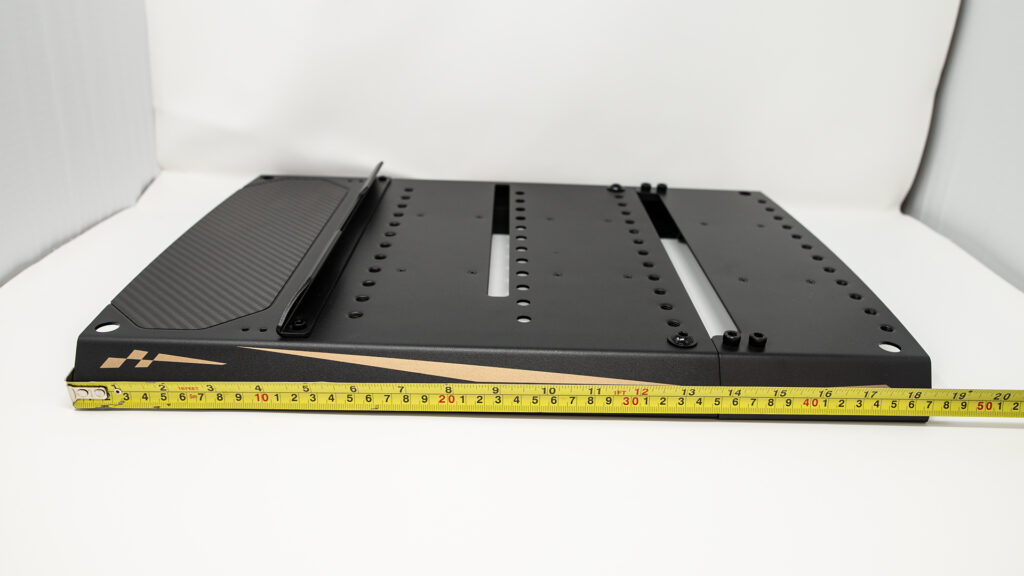
Moza suggests it’s possible to mount three mBoosters in a row, using the other two as a throttle and a clutch, but it’ll be a tight squeeze. Moza even states the mBooster can be mounted inversely, which will require some extra secure fixings due to its hefty alloy construction. In terms of hardware adjustment, however, there’s not much you can do except alter the pedal face angle.
The clutch and throttle pedals connect to the mBooster using two supplied RJ11 cables, and link to your PC via USB. There’s no need to plug in your Moza wheelbase. A chunky power pack supplies the mBooster, with all the initial set-up work performed automatically by Moza’s Pit House software.
One thing to note is that the mBooster is fairly loud when turned on (44 dB according to Moza) and only gets louder and more vibratory when in operation. Not something you want to use if you’re likely to disturb anyone, then.

Tunability
For the purposes of this review, I used a beta version of Pit House, but all the firmware updates for the mBooster (and other Moza peripherals I have on test) went as smoothly as I’ve come to expect from the Shenzhen-based firm.
The mBooster isn’t officially compatible with SimHub – just like Simucube’s active pedals – but it doesn’t need it, frankly. In Pit House you can adjust the pedal’s initial feel (through friction and damping settings), its mapping curve and various aspects of its force feedback, including vibration frequency and intensity.
You can tune the pedal to offer different types of feedback based on whether your car’s tyres are about to lock up under braking or whether they’re dealing with ABS. You can also turn off individual effects, which is handy depending on the type of car you’re driving. I didn’t feel the engine RPM effect offered any feedback that benefited my lap times, for example, so I left this off.

Likewise, you may not want both an ABS and a threshold braking effect to kick in while driving a GT3 car, which would muddy the feedback waters. Being able to save individual FFB profiles depending on the car or sim you’re using really makes a difference, especially for those who take their sim racing seriously.
Helpfully, Pit House currently has 15 preset profiles for the mBooster that can be swapped out with a single click. These range from longer travel sportscar settings to super stiff and tightly wound single-seater-style pedal settings. They’re a solid basis to work from but should suit most players until they’ve had a chance to dial themselves in. Take note that you’ll need to update any deadzone settings on your mechanical pedals after picking a new profile.
Minimum pedal travel is just 3.9mm in Pit House, extending to a maximum of 53.5mm, but you’re limited to a total travel of 32.1mm between those two extremes. You can even set the mBooster’s resting position closer or further away from your foot to help with comfort and ergonomics.

ABS
At the time of publication, the mBooster supports ABS vibration on Assetto Corsa, Assetto Corsa Competizione, Automobilista 2, EA SPORTS WRC, iRacing and RaceRoom, with support for other sims hopefully arriving at a later date.
How you feel the ABS in the above sims is up to you; I preferred a quick pulsing sensation to mimic the speedy throb of a road car’s anti-lock system when performing an emergency stop. I don’t have real racecar experience, so that’s my own ‘immersion benchmark’.
The haptic feedback works well, becoming increasingly violent the harder the virtual ABS system works on your car. It feels immersive, and it’s genuinely helpful in iRacing where using too much ABS can slow you down, but I felt it was less effective in other sims.
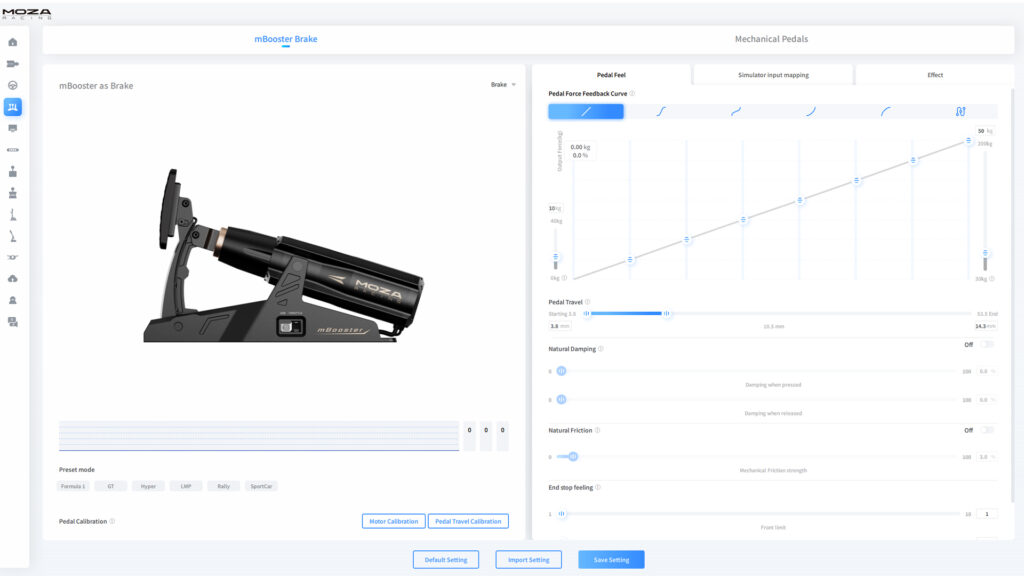
Lock-ups
Being able to feel when your tyres are locking up is even more important, and the mBooster can relay this data from AC, ACC, F1 24, DiRT Rally 2.0 and EA SPORTS WRC (more may have been added after publication).
It works extremely well in AC and ACC I found, as I sampled classic Super Tourers in the former and the insane Maserati GranTurismo MC in the latter. I made sure to ramp up the intensity of the locking sensation to make it immediately noticeable (unfortunately, I was unable to get it to work with rFactor 2, which is probably my most-used sim, but I’ve reached out to Moza for a fix).
It’s very effective, with the sensation of wheel lock-up gradually building to a crescendo. You know it’s coming, so your leg muscle learns how much force it takes to get to that point, so it’s potentially a vital tool to help maintain consistency and tyre life.
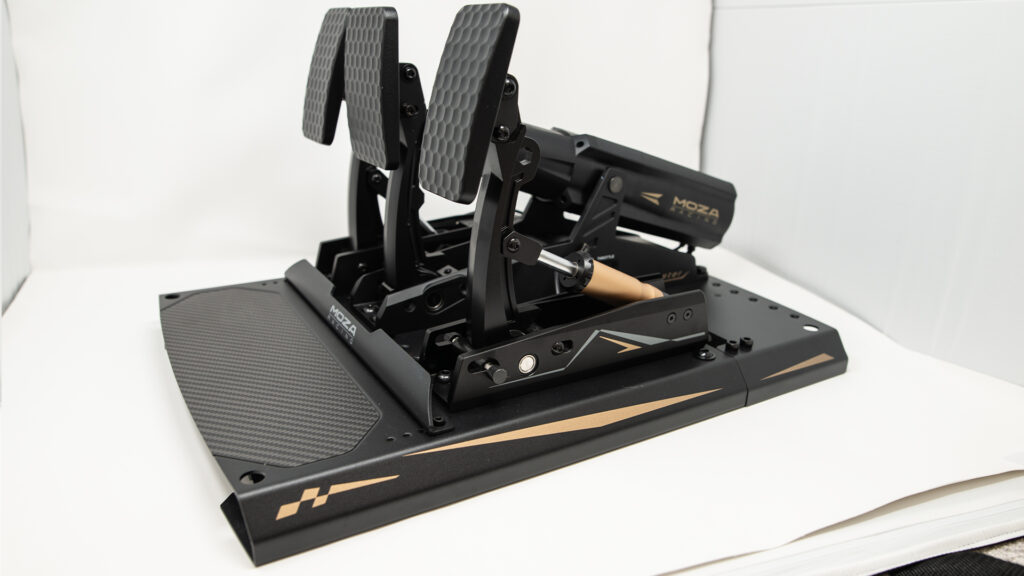
If you didn’t want to use any haptic feedback (for whatever reason), the mBooster still feels like a solid, load-cell-equipped brake pedal. And it should do, given it uses dual 200 Kg load cells. However, the maximum force the mBooster can actually simulate is 200 Kg, which is still plenty considering that Formula 1 drivers rarely exceed 150 Kg of brake load pressure.
I prefer to set my maximum brake load pressure to around 55 Kg in Pit House, as it feels more comfortable on my ageing knees and hips… Regardless, the mBooster feels smooth and secure under braking, with or without electrical assistance, and not unlike my Heusinkveld Sprints. And you can easily adjust it to feel stiff like an open-wheeler or softer like a road car, helping with immersion.

iRacing and the Moza mBooster Active Pedal
From the outset, I assumed using an active brake pedal would greatly benefit my iRacing experience. While using the sim in the past I’ve often felt that cars lack front-end bite, with overcompensation leading to frequent brake lock-ups.
To a certain extent, I was right, as I was able to set up a brake threshold vibration (iRacing can’t output lock-up telemetry currently, only ABS, which is disappointing) and this kept me constantly informed on whether I could increase brake pressure or bleed some off before turning in.
The Porsche 911 GT3 Cup (992) isn’t the easiest of cars to drive but I gained a new-found confidence in its abilities, despite iRacing’s odd tyre behaviour frustrating on several occasions.
However, this got me thinking about how you can theoretically use another mBooster as a throttle pedal, with any breaks in traction simulated haptically (although only AC and ACC are officially supported at this stage).

Moza versus Simucube: Who has the best active pedals?
Fortunately, I was able to sample Simucube’s ActivePedal Pro (née ActivePedal) while reviewing the mBooster, as I swapped hardware with my Traxion colleague John Munro.
I used the same sims and cars and tried to match the intensity and frequency settings between the two pedals as best I could, but would the performance of Simucube’s ActivePedal match its hefty price tag?
In a word, yes.
From the first press, Simucube’s example oozed clarity. The vibration effects were clear and precise compared to the mBooster, and much less muddled. For example, something my colleague John Munro highlighted immediately was that the mBooster’s effects had a strange ‘stepped’ sensation.
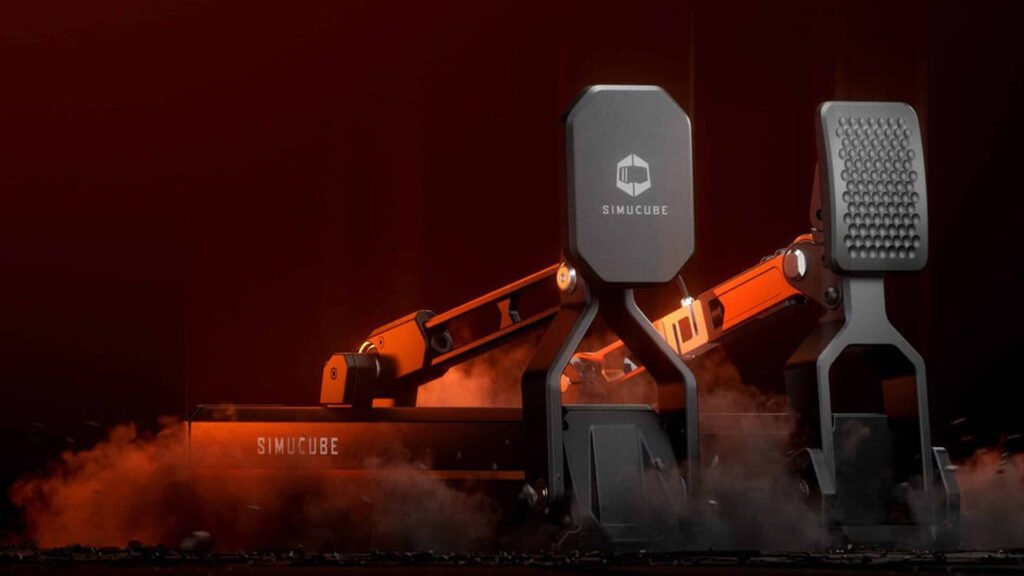
What I mean by this is that when applying constant pressure to the mBooster, the haptic feedback would start at a higher frequency and quickly settle to the desired vibration. Simucube’s pedal gives you the requested vibration level and nothing else, providing you with immediacy, precision and confidence.
Minus haptics, both pedals are extremely robust, with Simucube’s probably edging it on aesthetic appeal. The way Simucube’s ActivePedal software allows you to change how the pedal feels is very powerful, too.
Pit House offers similar options but the mBooster doesn’t feel as rock solid when switching to a Formula 1-style input, for example. If the ActivePedal didn’t exist the mBooster would be an even more impressive piece of kit.
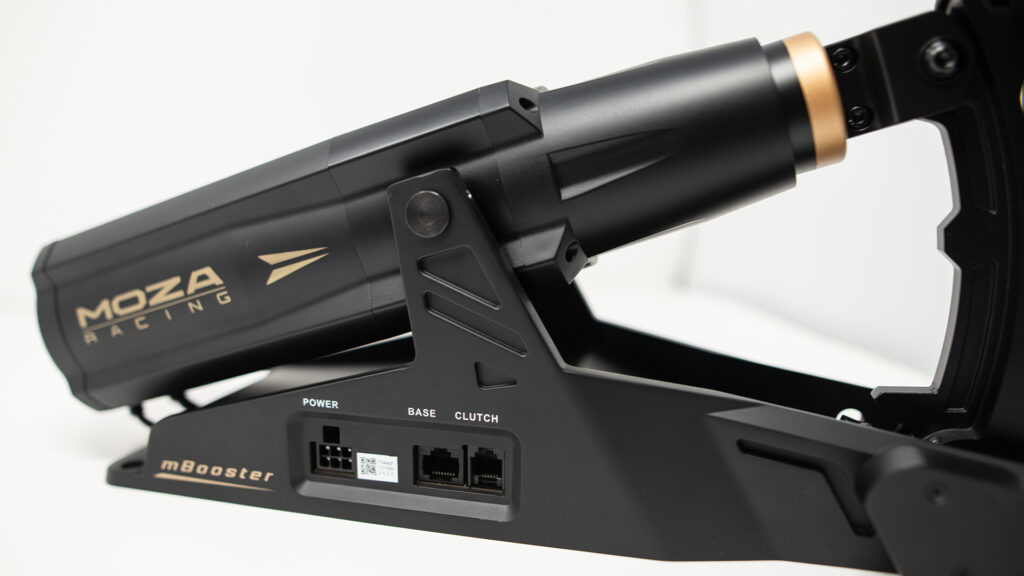
Moza’s mBooster Active Pedal: the verdict
Comparing the two only confirms that the more expensive Simucube ActivePedal is better than the Moza mBooster Active Pedal. But, at twice the price, it should be.
However, the mBooster still offers a lot of comparative performance. The tunability of Moza’s debut force feedback pedals meant I could easily tailor the kind of feeling I wanted from its software, even when sims didn’t natively support all its functions.
Being able to predict when a tyre is about to lock or when you’re using too much ABS is a godsend for professional or enthusiast-level sim racers, but this arguably highlights the mBooster’s weakness, too.
It’s not for casual sim racers in my opinion. Although it can be set up and installed relatively easily, tuning the mBooster to your individual car and sim needs is a time-consuming process, despite its one-click profile switching. It’s not ideal if you just want to hop between sims for a bit of fun.
That’s not to say you couldn’t do this; you could simply turn off the haptics and still enjoy the mBooster as a fantastic load cell brake pedal, but that rather defeats the purpose.

Immersion
Whether it’ll make you a quicker driver or not is open to interpretation too. As a sim racer who raced to a professional standard many years ago, I didn’t find my lap times dramatically dropping while using the mBooster, but I didn’t get slower either.
Active pedals provide more immersion, and when dialled in correctly could help drivers become more consistent (a well-optimised ‘brake threshold’ setting did for me at least).
I believe the mBooster is most likely to appeal to committed enthusiasts. The only problem with this sector of the market is that enthusiasts are more likely to opt for the best option rather than a budget alternative, no matter its bang for buck.
Ultimately, Moza’s active pedal isn’t as pleasant to use as Simucube’s, with muddier feedback and lower-quality appearance and feel. However, unless you enjoy looking at your feet while driving, the mBooster offers similar features for nearly £800 less.
In my opinion, combining the CRP 2 throttle and clutch with an mBooster brake has elevated Moza’s pedal offering to the next level. If you’ve already invested in the Moza ecosystem it seems like a logical next step to gaining more immersion, but it won’t suddenly gain you a few tenths of a second.
If you’re in the market for an active pedal and can’t justify the cost of Simucube’s offerings, then the mBooster is a worthy alternative, however.
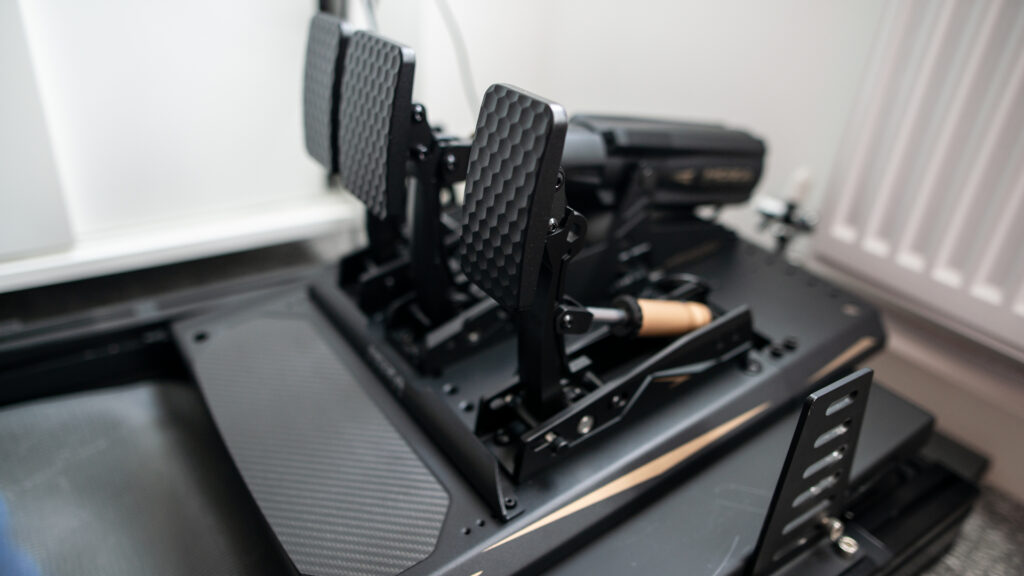
Moza mBooster Active Pedal price and release date
The Moza mBooster Active Pedal will retail for $799 / €899 / £799 / $1,399 AUD / 129,900¥ when it releases on the 18th of March 2025 at 1 PM UTC / 2 PM CET / 9 AM EDT / 10 PM JST.
Purchasing the Moza mBooster Active Pedal as part of a bundle with a CRP 2 throttle pedal, CRP 2 base plate and mBooster Base Extension Plate will cost from $999 / €1,099 / £ 999 / $1,899 AUD / 159,900¥.
Customers can also buy the CRP2 Pedal Plate and Base Extender Plate as a bundle for $129.
What are your thoughts on Moza’s nascent active pedal? Let us know in the comments below.
Shop sim racing equipment
[adinserter name=”Moza Racing”]
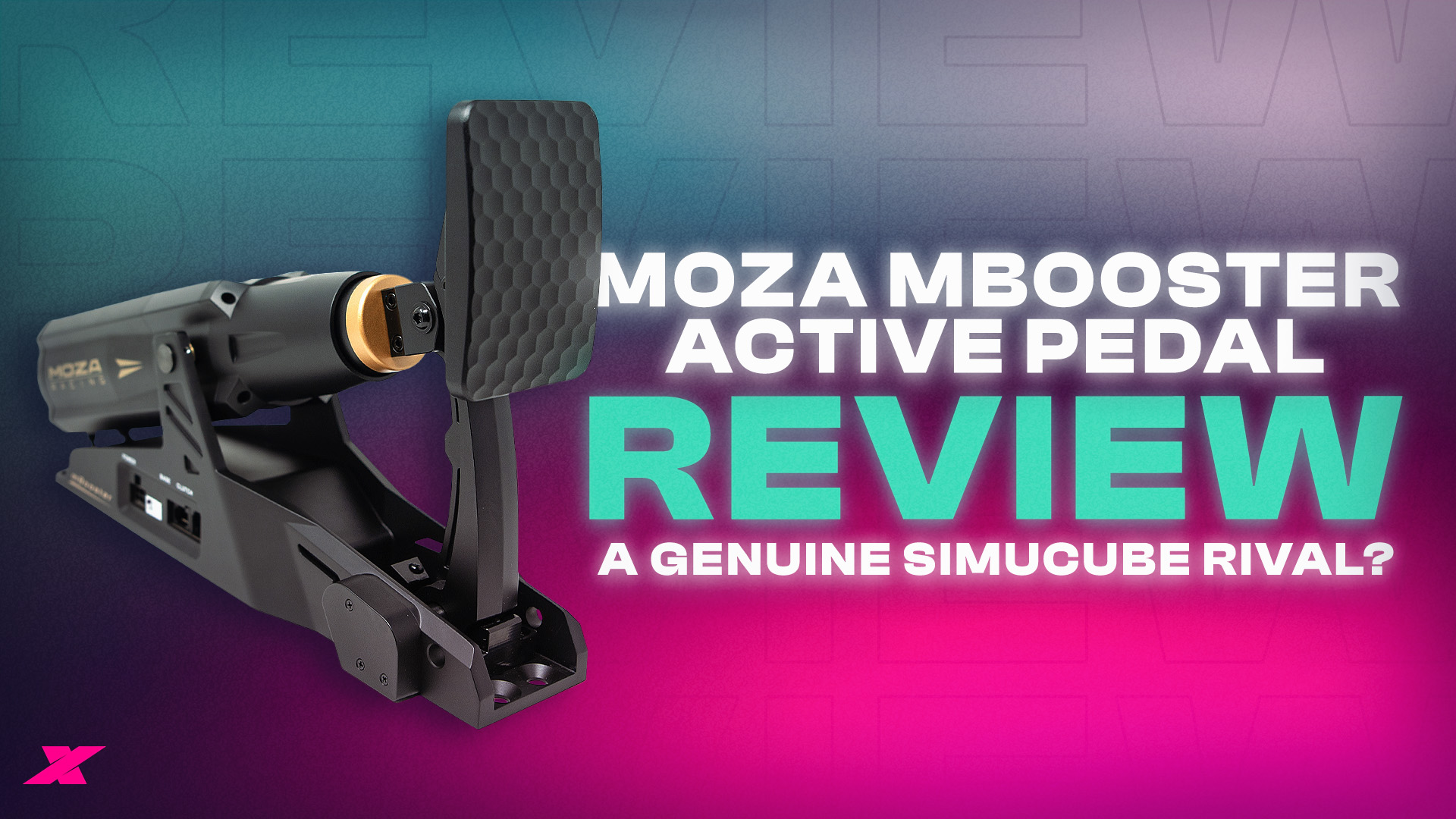

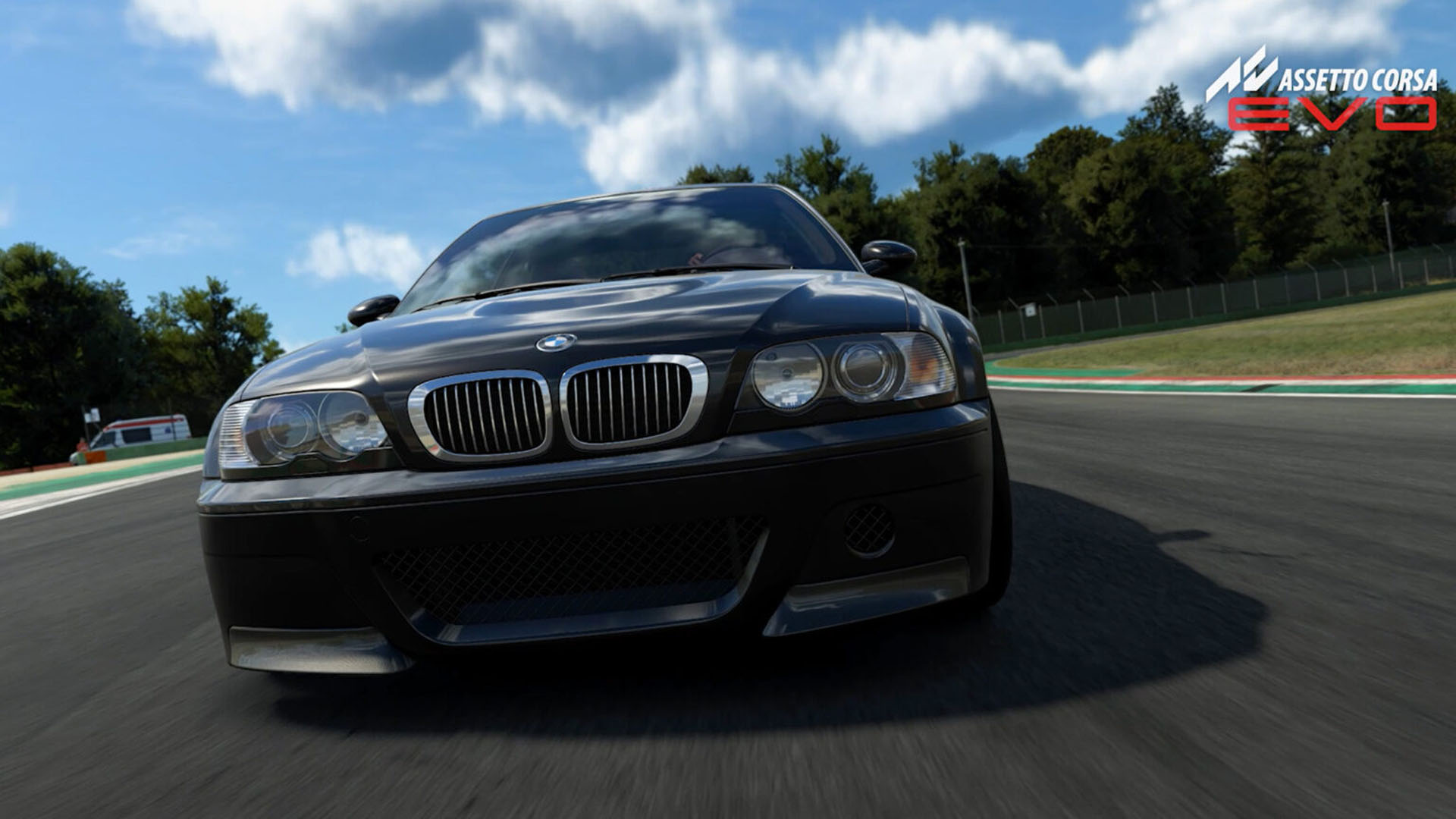

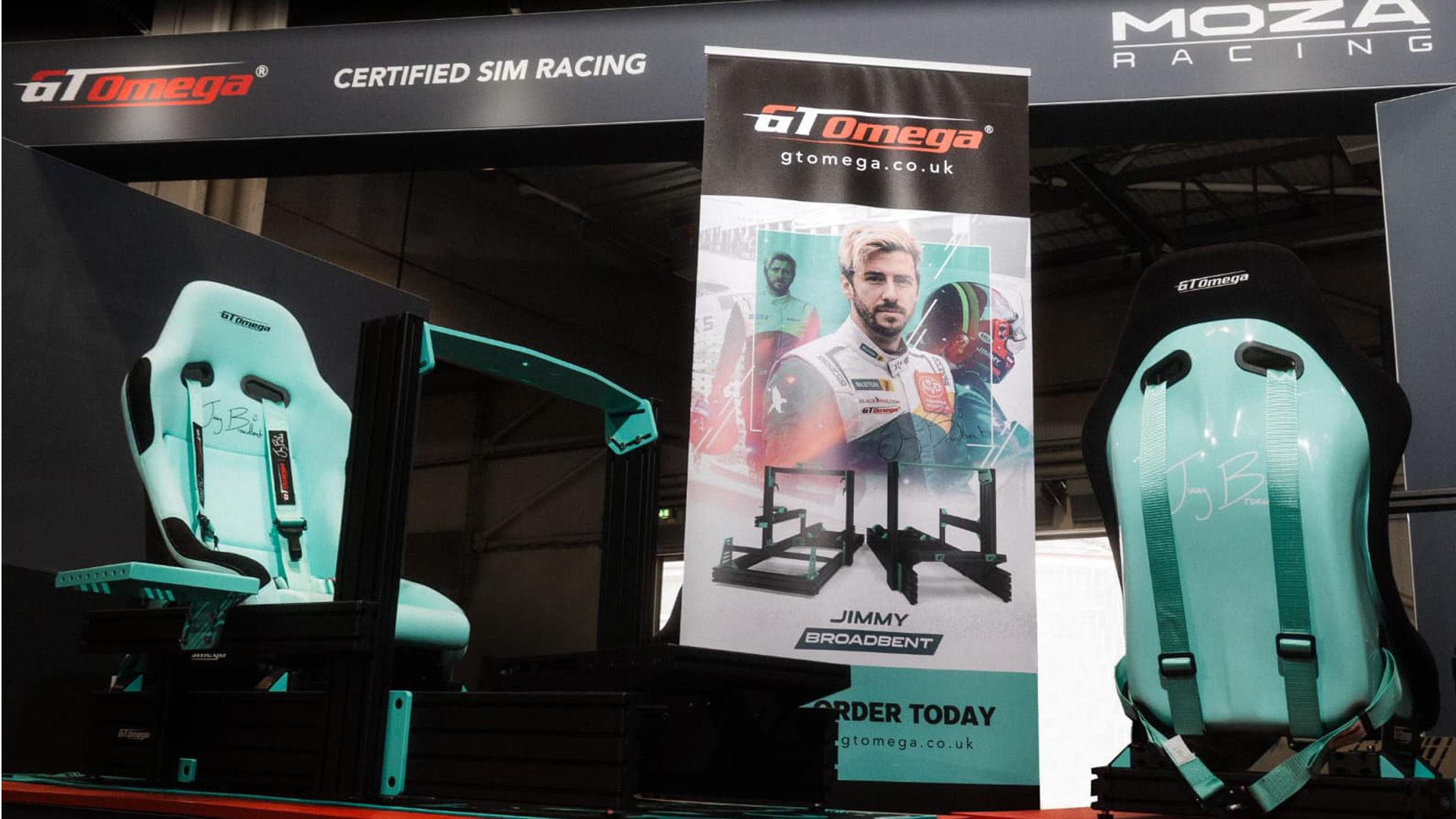
Chat with the Community
Sign Up To CommentIt's completely Free
I think I’ll give it 6 months to see if the new competition causes simucube to lower their price.